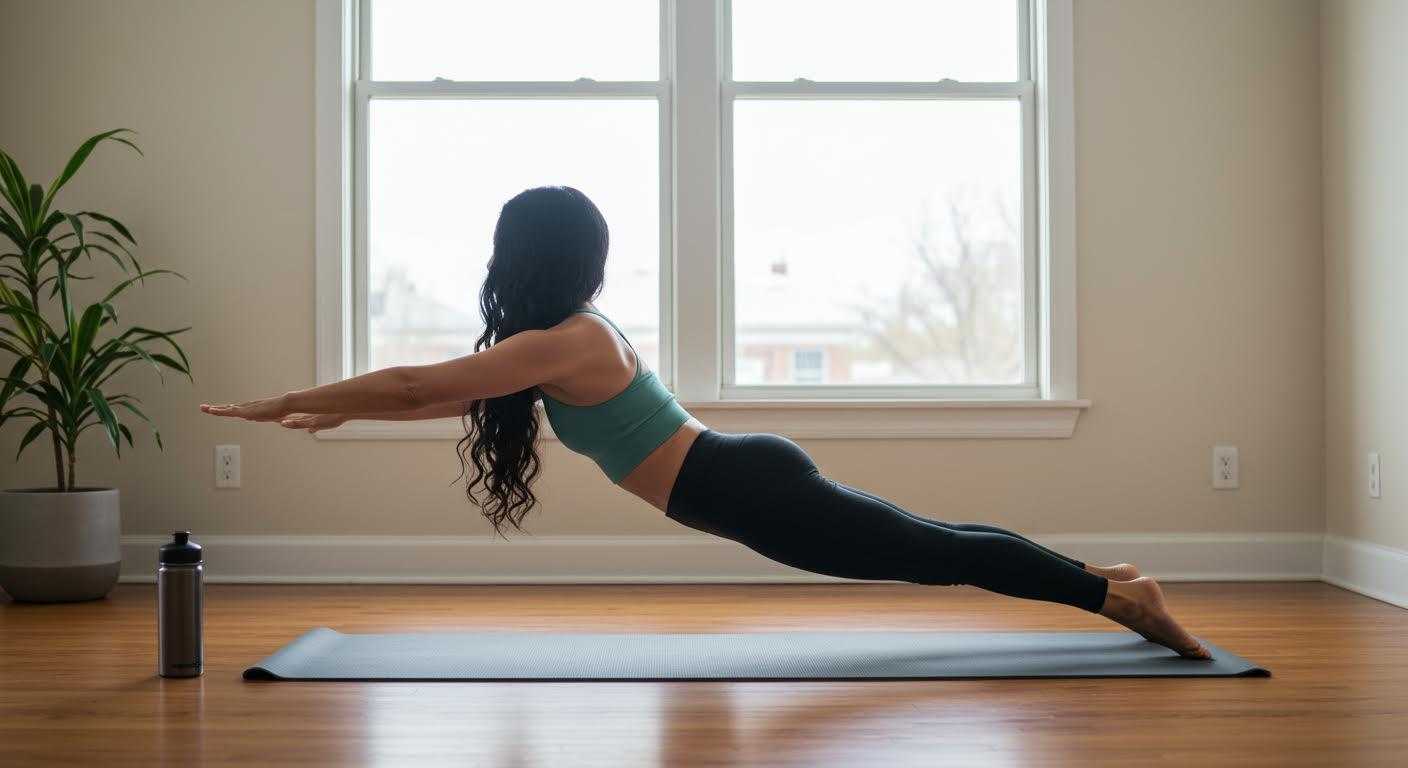You lean forward to check your email. Shoulders round inward. Your chin juts forward two inches past your chest. This exact position—repeated 2,847 times daily according to workplace ergonomics studies—has programmed your muscles into a failure cycle. While you’ve blamed your chair or genetics, one specific movement pattern interrupts this cascade at three critical points simultaneously. Stanford research shows measurable reversal begins within 14 days of targeted intervention.
The invisible cycle your daily posture creates
Forward head position pulls your center of gravity forward by 10-12 pounds of additional force for every inch your skull travels past neutral alignment. Your deep neck flexors—muscles designed to support your head’s 11-pound weight—weaken from chronic disuse. Compensatory tension floods your upper trapezius and levator scapulae muscles.
Your chest muscles shorten from collapsed positioning. Thoracic spine rounds forward an average of 2.3 degrees beyond normal curvature. Your lower back arches excessively to maintain balance, creating what physical therapists call a postural compensation cascade.
Dr. Tony English, PT, MSEd from University of Kentucky explains: “Each element reinforces the next, creating systematic muscular imbalances that perpetuate poor alignment.” This cycle strengthens wrong movement patterns while weakening functional strength your body actually needs.
How one movement interrupts three failure points
The Swan Dive Pilates exercise simultaneously addresses spinal extension, core activation, and shoulder blade retraction. Research shows this combination creates measurable improvements in thoracic kyphosis—the medical term for forward spine rounding—within structured programs.
Spinal extension mechanics target the root cause
Swan Dive positioning reverses forward thoracic curvature while engaging erector spinae muscles along your entire back. You’re strengthening the exact muscles that desk posture weakens. Controlled lifting from prone position teaches your spine proper extension patterns without forcing unnatural alignment.
Clinical studies document average thoracic angle improvements of 2.3 degrees after 16-session Pilates programs. This measurement reflects genuine structural change, not temporary positioning adjustments.
Integrated breathing resets tension patterns
Synchronized breathing during Swan Dive activates your parasympathetic nervous system. This physiological shift allows chronically tight pectoral muscles to release while simultaneously engaging weakened posterior chain muscles. Breath-coordinated movement prevents the forced positioning that creates new tension patterns.
Research confirms controlled breathing enhances neuromuscular coordination between muscle groups. Your body learns sustainable alignment rather than conscious postural corrections that fade within minutes.
The protocol that breaks the pattern
Studies showing measurable postural improvements typically require 3-4 sessions weekly over 10-12 weeks. However, initial awareness changes and muscle activation improvements begin within the first two weeks of consistent practice.
Frequency and consistency requirements
Research from multiple clinical trials establishes minimum effective dose at three weekly sessions lasting 25-45 minutes each. Programs using fewer sessions showed limited postural changes. Daily practice accelerates initial awareness but doesn’t significantly improve long-term outcomes beyond 4x weekly frequency.
Balance measurements improve 21.3% in medio-lateral stability after completing structured Pilates programs, indicating enhanced proprioceptive awareness that supports natural posture maintenance.
Neuromuscular reprogramming timeline
Week 1-2: Increased body awareness and initial activation of dormant stabilizing muscles. Week 3-4: Measurable strength gains in core and back extensors with natural shoulder positioning shifts. Week 5-6: Neurological reprogramming solidifies as proper alignment becomes effortless rather than conscious.
The failure cycle doesn’t just stop—it reverses completely. Strengthened muscles now reinforce optimal alignment patterns instead of perpetuating dysfunction.
What changes in 14 days versus 6 weeks
Initial improvements focus on muscular awareness and tension reduction. Acute postural changes appear immediately after single sessions but require consistent reinforcement to maintain. Research documents significant thoracic kyphosis reduction immediately following Pilates sessions, though benefits diminish by one-week follow-up without continued practice.
Sustained structural changes require 6-8 weeks of consistent training. However, the invisible failure cycle begins breaking within two weeks as dormant muscles reactivate and compensatory tension patterns start releasing. Participants report decreased upper back tension and improved posture awareness as early markers of neuromuscular reprogramming.
Studies confirm Pilates promotes “changes in habitual posture by enhancing spinal, scapular and joint flexibility while strengthening shoulder, lower back and abdominal musculature.” This integrated approach addresses multiple system failures simultaneously rather than isolated muscle training.
Your Questions About The Pilates Move That Transformed My Posture in 2 Weeks Answered
Can I practice Swan Dive at home without equipment?
Mat-based Swan Dive requires only comfortable floor space and proper instruction. Online Pilates programs cost $10-40 monthly compared to studio classes averaging $18-30 per session. Quality instruction matters more than expensive equipment for initial postural improvements.
Why does Pilates work faster than regular stretching?
Pilates integrates spinal alignment with breathing and core activation simultaneously. This addresses the entire postural compensation cascade rather than isolated tight muscles. Controlled movement patterns retrain neuromuscular coordination while static stretching only temporarily lengthens tissues.
What if I only have time for two sessions weekly?
Two weekly sessions produce measurable changes over 8-12 weeks rather than 4-6 weeks with optimal frequency. Consistency matters more than session quantity. Research shows even reduced frequency creates postural improvements when maintained over extended periods with proper form.
Three months later, you catch your reflection unexpectedly. Your shoulders rest naturally back from your ears. Your neck rises long from your spine. That familiar forward collapse has dissolved completely. Your body remembers different truth now—one it maintains without conscious effort.
